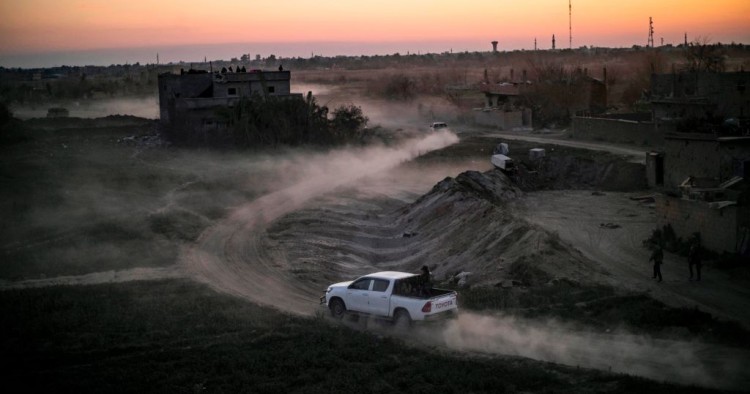Though ISIS’s territorial state was destroyed a year ago, the terrorist group continues to exist in the shadows and ungoverned spaces, presenting an ongoing insurgent threat across multiple areas of Syria and Iraq. Nowhere is that more clearly the case than in Syria’s central desert, which is controlled, at least on paper, by the Syrian regime and allied Iranian and Russian-backed militias. It is in this expansive desert region known as the “Badia” that ISIS enjoys invaluable strategic depth — utilizing the desert itself as well as an array of cave complexes to hide out and from which to set up fake checkpoints, launch ambushes and raids, and carry out assassinations, IED attacks, and kidnappings.
Two weeks ago, ISIS released a feature video showing off its capabilities in Syria’s Badia, along with a string of grisly executions. In the weeks since, ISIS has escalated its desert insurgency yet further, most notably between April 9 and 12 with a significant set of coordinated attacks on pro-regime forces south of the key gas town of al-Sukhna that drew in at least 36 hours of intensive Russian fighter jet and attack helicopter strikes. In the past week, ISIS operations have targeted pro-regime positions throughout the Badia, in northeastern Hama, central and eastern Homs, and in western Deir Ez Zor governorates, killing at least 15 personnel (though that number is likely higher).
For now, ISIS’s Badia strategy appears to seek to attrit the regime’s capacity to achieve its stated objective in the area: to “contain” the ISIS threat. That containment strategy has been in place since the spring of 2019, after a sophisticated ISIS ambush in the Badia managed to surround and besiege a convoy of more than 70 Syrian Army personnel for two days — an attack that sparked an emergency meeting of Syrian, Russian, Iranian, and Lebanese Hezbollah officers that determined it was necessary not to defeat ISIS, but contain it. Instead of prioritizing a campaign against ISIS, the regime withdrew forces from the Badia shortly thereafter, sending them to launch a major campaign on Idlib. ISIS has methodically expanded its capabilities in the area ever since.
The Badia is a strategically valuable region, containing Syria’s crucially important gas fields and the east-west M20 highway, connecting Deir Ez Zor to both Homs and Damascus, via key towns like al-Furqlus, al-Qaryatayn, al-Sukhna, and Palmyra. For those in the U.S. who argue for a withdrawal from Syria and to “leave ISIS to Assad,” the Syrian regime’s demonstrable complete lack of will and capability to even contain ISIS in the Badia ought to be a wake-up call as to the implications of their proposals. With 500-600 U.S. troops spread across northeastern and eastern Syria, ISIS remains a shadow of what it represents in regime-held territories west of the Euphrates. The ingredients that fueled ISIS’s explosive expansion in Syria in 2013-14 are not only still present today, they are worse. The Syrian regime failed to deal with ISIS then and it has provided no evidence it will do better this time around.
Charles Lister is a Senior Fellow at MEI and the Director of the Countering Terrorism & Extremism Program.
Photo by DELIL SOULEIMAN/AFP via Getty Images
The Middle East Institute (MEI) is an independent, non-partisan, non-for-profit, educational organization. It does not engage in advocacy and its scholars’ opinions are their own. MEI welcomes financial donations, but retains sole editorial control over its work and its publications reflect only the authors’ views. For a listing of MEI donors, please click here.













